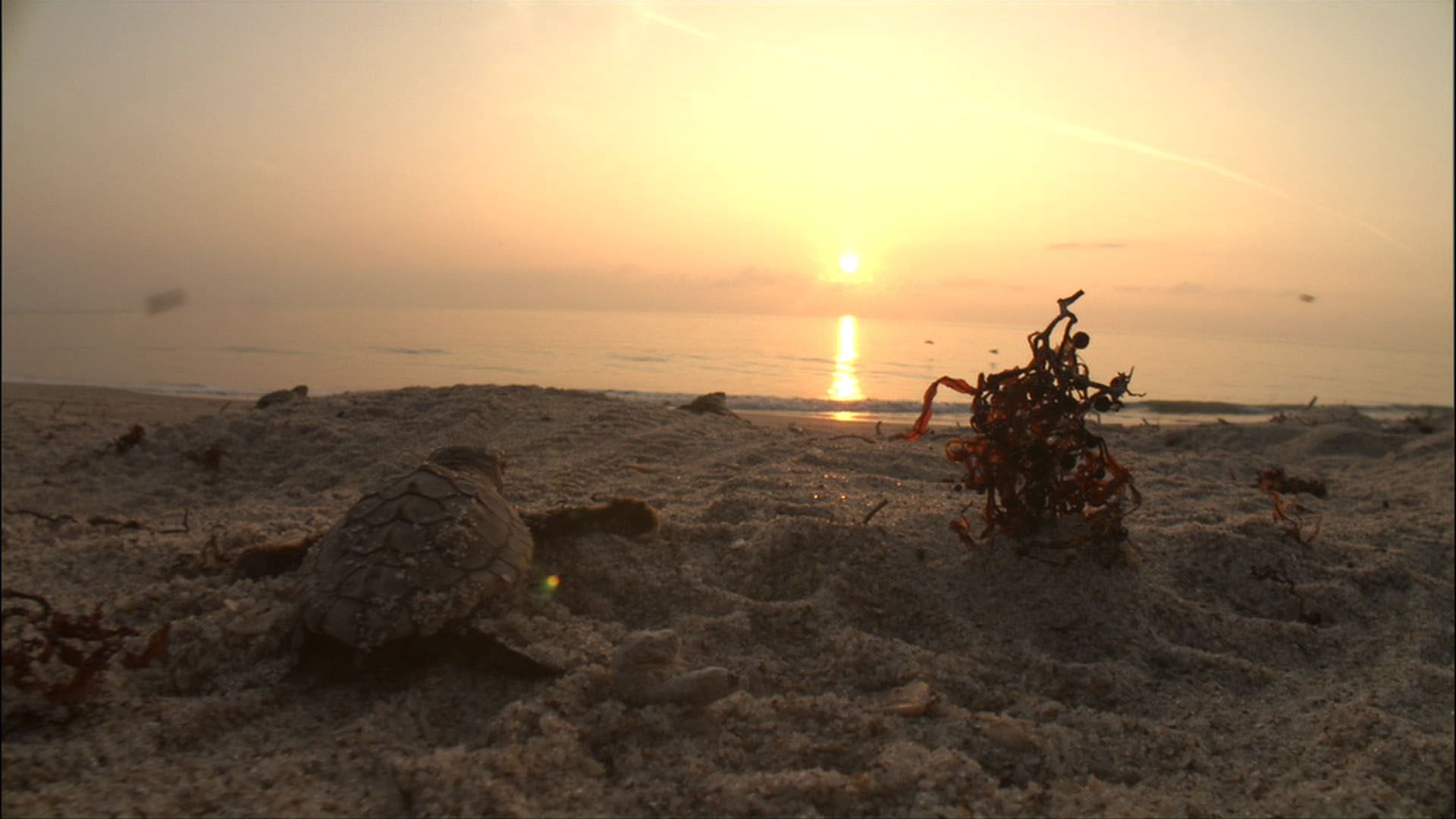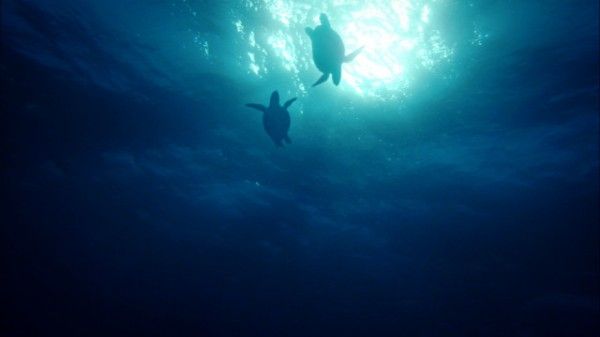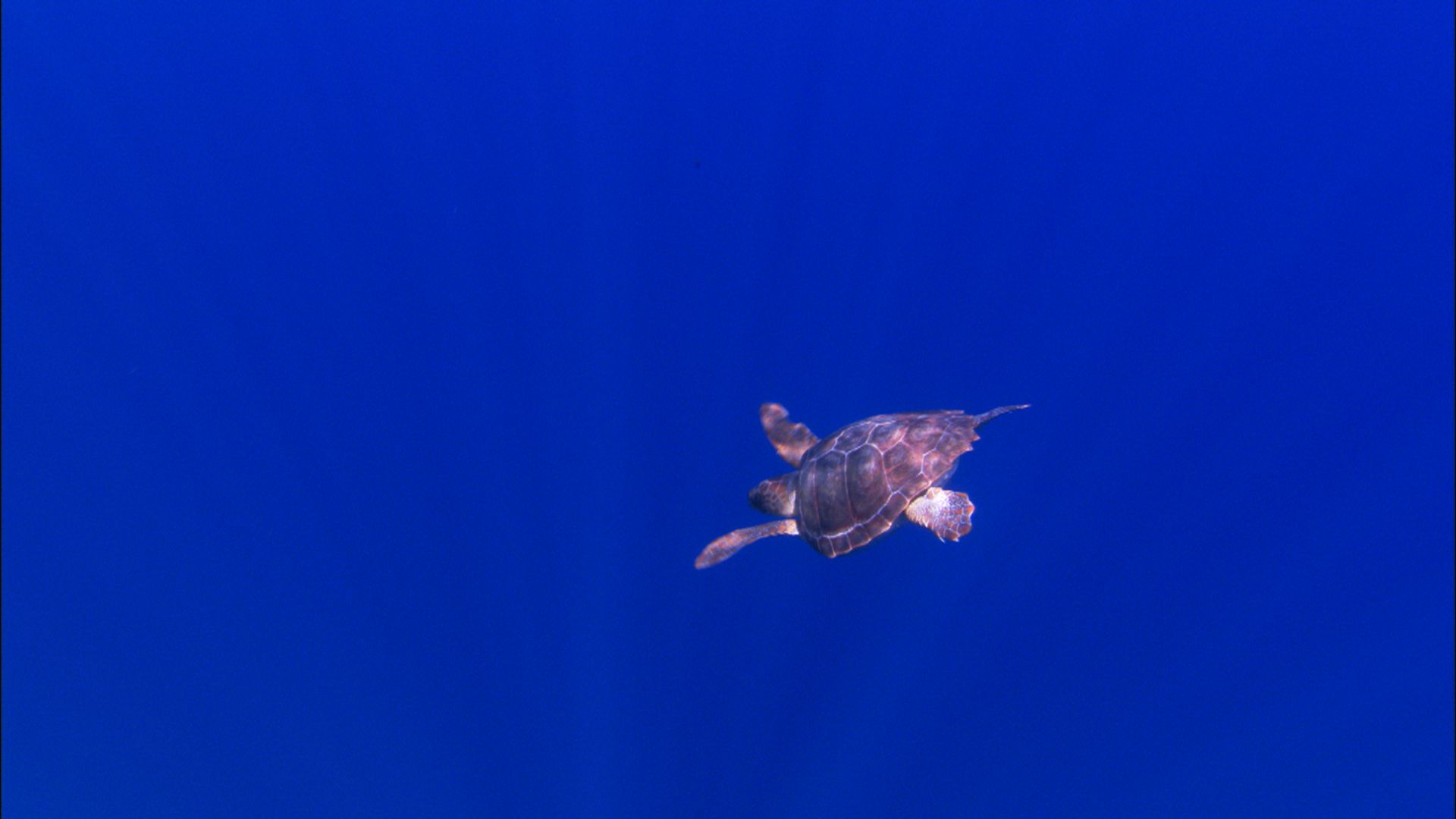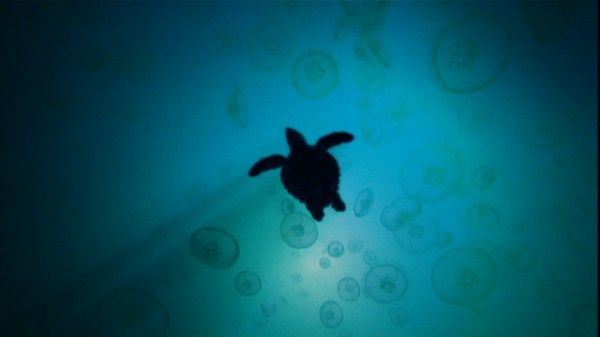When a loggerhead turtle is born on the beach in Florida, she rides the Gulf Stream all the way to the frozen north and ultimately swims around the entire North Atlantic to Africa, and then back to the beach where she was born. But, from the very moment her life starts, the odds are stacked against her, as just one in 10,000 turtles survive the journey. Faced with the creatures of the deep and the hands of fisherman, she is following her calling to return home and lay her own eggs. This astonishing 9,000-mile journey is shown in Turtle: The Incredible Journey, the new documentary from award-winning filmmaker Nick Stringer that is narrated by Academy Award nominee Miranda Richardson.
At the film’s press day, British actress Miranda Richardson talked about how she got involved with narrating the film, that she’s an animal lover and ambassador for the World Wildlife Fund (WWF), and that she was most surprised by the length of the journey that the loggerhead turtle embarks on. She also shared her reflections on being a part of the Harry Potter franchise, which concludes with the last film this July, revealed that she’s a huge Twilight fan (she’s Team Edward) and can’t wait for Breaking Dawn, and said that she would next be filming World Without End, the sequel to Pillars of the Earth. Check out what she had to say after the jump:
Question: How did you get involved with narrating this film?
MIRANDA RICHARDSON: Well, I wasn’t involved in any of the filming, so it came to me as a finished product. They said, “We’d like you to do this. Would you like to do it?” And, I said, “Yes!” That’s how it went. I thought that the way it was presented was very beautiful and had a broad range for people. I thought it was incredibly engaging, beautifully shot, and taught me a lot. You can’t know everything. I certainly didn’t know the half of what goes on, in the turtle’s journey. Some of the filming in this inevitably had to be reconstructed because you can’t physically get all of the shots, at all the life stages that you see, unless you recreate them, in some way, so some things were done in studio. The turtles that were used were rescued and about to be rehabilitated. The whole purpose was to tell the story as fully as possible without being unnecessarily intrusive. The life of a nature documentary cameraman is a very particular one because you can wait and wait and wait and wait and wait and wait, and maybe in the final afternoon of the final day, you might get your shot, so this project took two years to make.
Did you have any input into the scripting for the narration?
RICHARDSON: A little. I’m quite wary, usually, of imposing too much, tonally, on something because I like to give the audience credit, but there was a particular brief on this one. You are empathizing without anthropomorphizing with a baby turtle and going on the journey with her. There has to be warmth. There’s not just facts. This is a vulnerable, tiny thing that’s out there, being battered by the vastness of the ocean. Is she going to make it or not? So, there was a little more to do, tonally, than normally. I’m already there. I’m already completely empathetic. Normally, it’s best to have a very slight sense of distance about it, but this wasn’t quite the same.
Were you a natural for this because you are an animal lover?
RICHARDSON: Yes. I’m an ambassador for WWF, so I’m very hot on conservation. Conservation of species, which is what WWF stands for, doesn’t necessarily mean animal welfare. It means all species, including us, and the integration of species. The big thing is bio-diversity, how necessary that is, and how we are messing up. That has to be a part of this movie, and it’s important that kids see what has to be avoided for the success of any species – but in this instance, the loggerhead turtle – for it to survive and, ultimately, for us all to make it in this world. It’s not a gloomy movie, but there are some depressing moments in it.
What is the most surprising thing you learned about the loggerhead turtle?
RICHARDSON: I think just the length of the journey and how long it takes to get back to the original nesting beach. That’s an extraordinary thing. They have this built-in compass that takes them back. And also, I didn’t know how long they had been around. After 200 million years, it seems a shame to lose them now. So, governments are talking to other governments, and we do have to clean up, in many ways. We have to stop the degradation of the environment and the beaches. We have to stop releasing nutrients that are upsetting balances in the ocean. We have to carry on with this new form of hook that’s being used on the long-line fishes, so that the turtles don’t get caught. There’s something called a T.E.D., which is a turtle exclusion device, that is attached to the shrimp nets. It has a grid that stops the turtles from being caught up in their shrimp nets, and they’re very, very successful.
We’re over-fishing and people are coming into zones that they should be in, and they’re going to be much more strict on fishing, in all our waters. And then, you have to wonder about what happens to people who depend on the sea for their livelihood. Somebody at WWF said, “Well, why do they have to just fish for fish? Why can’t they fish garbage?” Actually, that’s a brilliant idea because people would still be employed. That’s a huge detriment to our oceans, at the moment, and there may come a time when fishing out the garbage is what it’s going to be about, at least for a time, until stocks can recover. We have to rid the damage that’s been done so far.
Do you have a favorite scene in the film?
RICHARDSON: I love when the older turtle is in the cold waters and puts her head up and the Northern Lights are there. I know it’s romantic, but they do go there and these things happen. It is a beautiful thing. Without anthropomorphizing, if you were there, you know how you would feel. You’d feel awed. Just the idea of this creature being in its proper environment is what I love.
What can people do to help protect these endangered species?
RICHARDSON: Well, WWF talks to governments and encourages debate. Where people’s livelihoods are involved, they try to offer alternatives. In some places of the world, like Bali, they use turtle meat in religious ceremonies, and they’re encouraging a replacement for that, gradually changing people’s consciousness. In the Caribbean and Mexico, it’s still not altogether illegal to catch turtles for meat and take their eggs. It is something that people eat, and they’re trying to offer alternatives to that. And, there are illegal tradings that go on elsewhere, which is supposed to have stopped, so there’s close monitoring of that. The use of the different types of fishing hooks and the turtle exclusion devices is saving 99% of turtle deaths, in any given area. It’s being monitored. People are now aware of the degradation. Where we’re still behind is on what is released into the ocean. Everything goes into the ocean, changing the balance of things there. Global warming – if we are not a significant part of that and that continues anyway, as part of a cyclical pattern in nature – will have serious ramifications because the temperature determines the sex of turtles, so there may come a time when there’s an imbalance of male to female, which would be tragic. But, whether we’re going to have a significant impact on that or not, I don’t know.
Even though you’re not a part of the final Harry Potter film, do you have any final thoughts on the closure of the series?
RICHARDSON: Oh, I’m looking forward to Breaking Dawn! I think it’s a great thing to be part of. I do, truly. I think it’s something that’s going to last. Even though the special effects move on, at a fast pace, I think that the storytelling, which is of prime importance, is pretty great, during that franchise. I think there’s a back-and-forth that happens. The kids don’t just see the movies, but they also read the books. It doesn’t matter if they read them before or after. There’s a wish and a will to get involved in that world, which is great. I know that the stories have a lot of detractors, but [J.K. Rowling] got people reading again, in a mass way.
What was it like to work with the kids and watch them grow up throughout the films?
RICHARDSON: They do seem very grounded, and that is great. I think they have a great sense of humor. I don’t think they’ll get lost. I think they have a very strong work ethic. I don’t know whether they will all stay in the business. I can’t tell with Emma Watson, whether she will want to move on and diversify. I think the other two (Daniel Radcliffe and Rupert Grint) will stick with it, as long as it sticks with them. Daniel is hoofing away on Broadway right now [in How to Succeed in Business Without Really Trying]. Good for him! He’s really showing that he’s willing to try anything. It must give you a tremendous confidence, just having practiced for so long. Worlds are open to them.
What is it about Breaking Dawn that you’re so excited about?
RICHARDSON: Oh, I’m a huge Twilight fan! I love it! Maybe they’ll invite me to the premiere now.
Are you Team Edward or Team Jacob?
RICHARDSON: Oh God, don’t do that! I’m Team Edward.
What do you have coming up next?
RICHARDSON: I’m going to film the sequel to Pillars of the Earth, called World Without End. We’re filming in Budapest and Slovakia. After I do that, then we’ll see.




